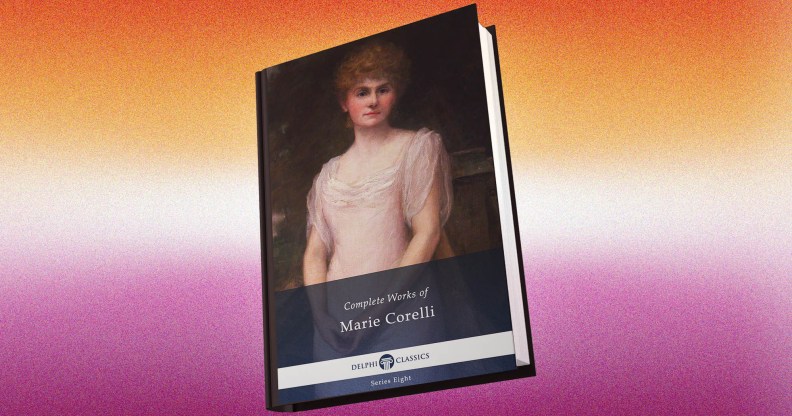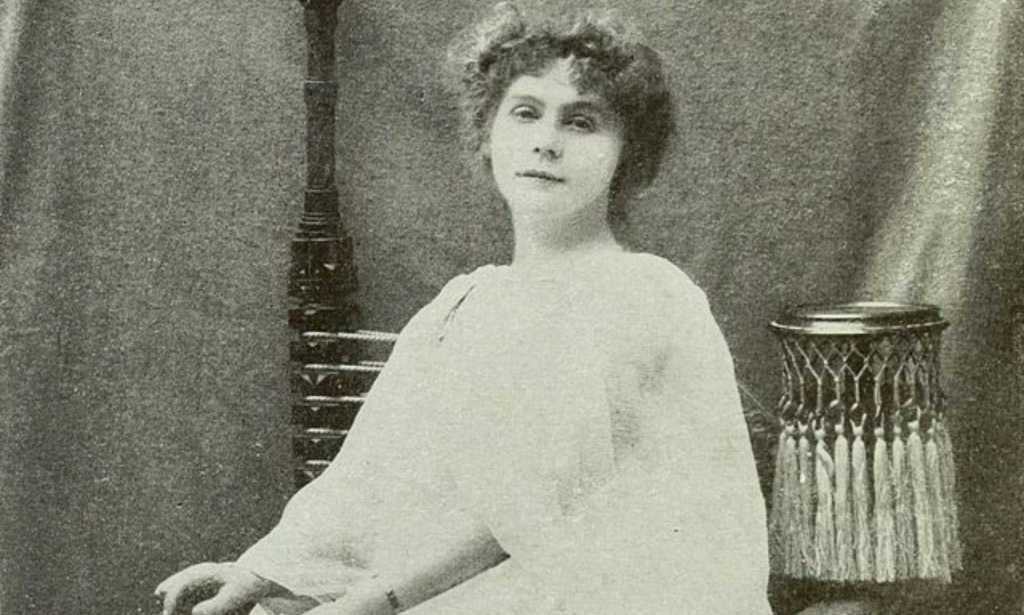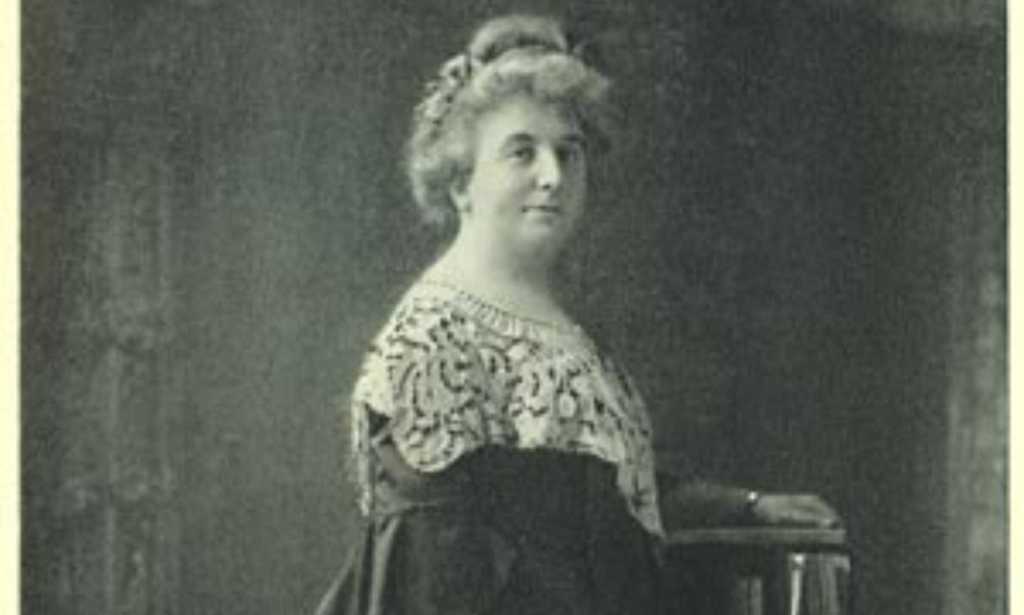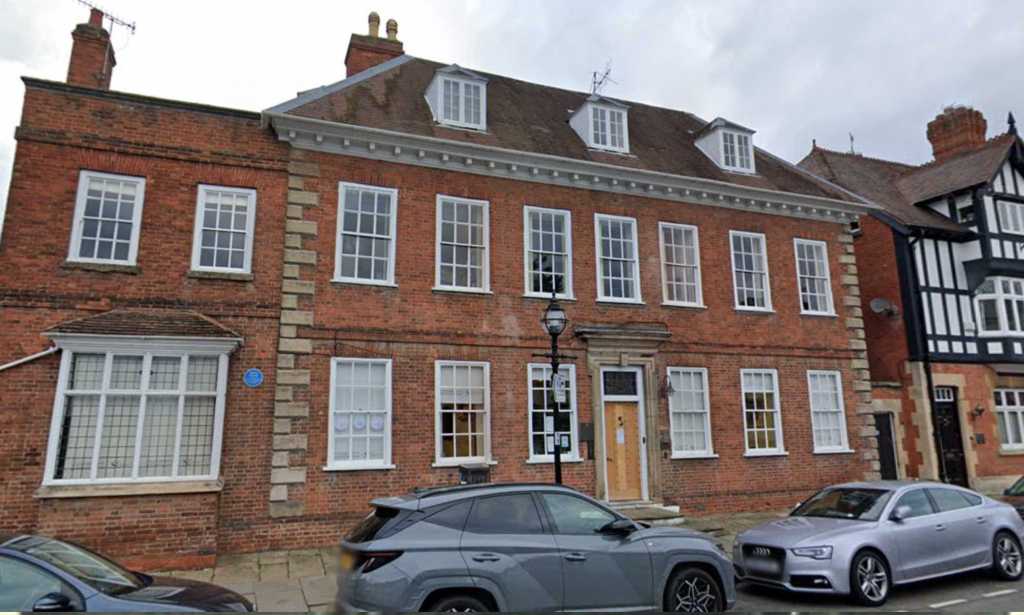Marie Corelli: Long-forgotten, eccentric Victorian author had a life-long queer love, historian says

Marie Corelli (Delphi Classics)
One of the Victorian era’s bestselling authors is someone you are unlikely to ever have heard of: the eccentric and possibly queer Marie Corelli.
Corelli, an extroverted celebrity of her time who liked to add a little bit of stardust (read: fabrications) to her backstory, lived her later years in Stratford-upon-Avon with her ‘companion’ of 40 years, Bertha van der Vyver (also known as Bertha Vyver), and may very well have had a lesbian sex tower in her back garden (if rumours are true).
It is important to note Corelli never described herself as a lesbian, or used the language of the time to identify herself as such. However, as well as living with Vyver, Corelli also left everything to her in her will, and the pair were eventually buried side-by-side.
A dedication to Vyver in Corelli’s 1887 novel Thelma recognises her “sweet companionship, tender sympathy, and most faithful love”.
Saraya Haddad is a PhD researcher examining queerness in Shakespeare’s and other early modern works at the Shakespeare Institute. She told PinkNews that she believes their relationship was certainly more than platonic.
“They were childhood sweethearts, meeting at school and to this day are with each other, for they have been buried together,” she said.
“To say this was not a romantic relationship is like saying that that the sky is fuchsia.”
There is also queerness evident in Corelli’s work, with detailed and erotic descriptions of women (though expressed by male characters).

It was in 1899, around the age of 45, that Marie Corelli moved with Bertha van der Vyver from London to Stratford-upon-Avon, where her eccentricities would become well-known by locals.
The author caused a splash, quite literally, in the Warwickshire town as she was often seen boating down the River Avon in a gondola – complete with gondolier. An edition of the Stratford-upon-Avon Herald from 1905 reported on the boat, stating: “This Lady never does things by halves”.
The gondola was part of Corelli’s life-long attempt to romanticise the reality of her being born illegitimate.
Throughout her lifetime she crafted different stories of her descending from Italian royalty. Even her name – Marie Corelli – was an invention. The author was born Mary Mackay, the daughter of servant Mary Elizabeth Mills and Scottish poet Dr Charles Mackay.
The move to Stratford-upon-Avon was prompted by an illness and Corelli subsequently decided to stay for the remainder of her life, in what is now the well-trodden celebrity move of trading city life for a big mansion in the countryside.

Corelli was certainly one of the eras most popular authors.
Details shared by the British Library, which contains Corelli’s publishing agreements in its archive, show the author was offered £800 for her 1890 novel Wormwood by publisher Richard Bentley. Today, that figure would be an advance of around £82,000 – not a measly sum.
These documents also reveal her royalties were around £900 in 1893 and £1,000 a year later. When compared with today’s money, this is around £93,000 and £104,000 respectively. As many historians have pointed out, at the height of her fame, Corelli’s works outsold every other novel on the market.
While other authors from the period remain prominent names in the literary canon – including Thomas Hardy, Lewis Carroll and Joseph Conrad – Corelli’s works fell out of fashion with changing tastes.
Like any author, Corelli faced critics, who scorned her melodramatic and florid style – and focus on reincarnation, astral projection and mysticism – as popular puff rather than real literature.
Marie Corelli helped preserve Stratford-upon-Avon
Her fame as an author did not stop her from throwing herself into small town life after the move to Warwickshire, getting involved in the Stratford-upon-Avon Choral Union and starting to help preserve the town’s historic early-modern buildings, eventually joining the Guild of Stratford when it was formed.

As Jann Tracy, author of Marie Corelli: Shakespeare’s Champion, said in a blogpost for the Shakespeare Birthplace Trust, Corelli was a “a conservationist long before there was a general understanding of the term”.
During her time in Stratford, she paid many thousands of pounds to renovate the town’s rundown Tudor buildings. In one case, she paid one building’s owner the modern day equivalent of £20,000 to restore it to its former glory, after an elaborately carved post was uncovered during repair work.
Saraya Haddad said Corelli had an unprecedented impacted on the town, for without her “the buildings would not be anywhere near as well kept as is today”.
“Perhaps they would not even be here at all, which is a harrowing thought.”
Properties and sites Corelli bought and restored, or helped to restore, included Harvard House, named in relation to the founder of Harvard University, the gardens of New Place (Shakespeare’s final home) and Mason Croft, the home she and Vyver lived in and now the base of the Shakespeare Institute of the University of Birmingham.
In the gardens of Mason Croft sits a large watch-tower which Corelli, given her romanticising personality, supposed to be Elizabethan but is in fact an 18th century folly.
The folly, which one anonymous history and literary blogger called a “little piece of nonsense”, was transformed into a summertime study for the author.
However, rumours have long floated amongst the students of the Shakespeare Institute that the tower, which still stands in the Mason Croft’s garden, was used for more clandestine affairs – and was a lesbian sex tower.
Now, there is absolutely no historical evidence of this whatsoever but if we had an extravagant, ivy-clad stone tower in our garden, we know we would use it as more than just a writing den.
How did this story make you feel?

